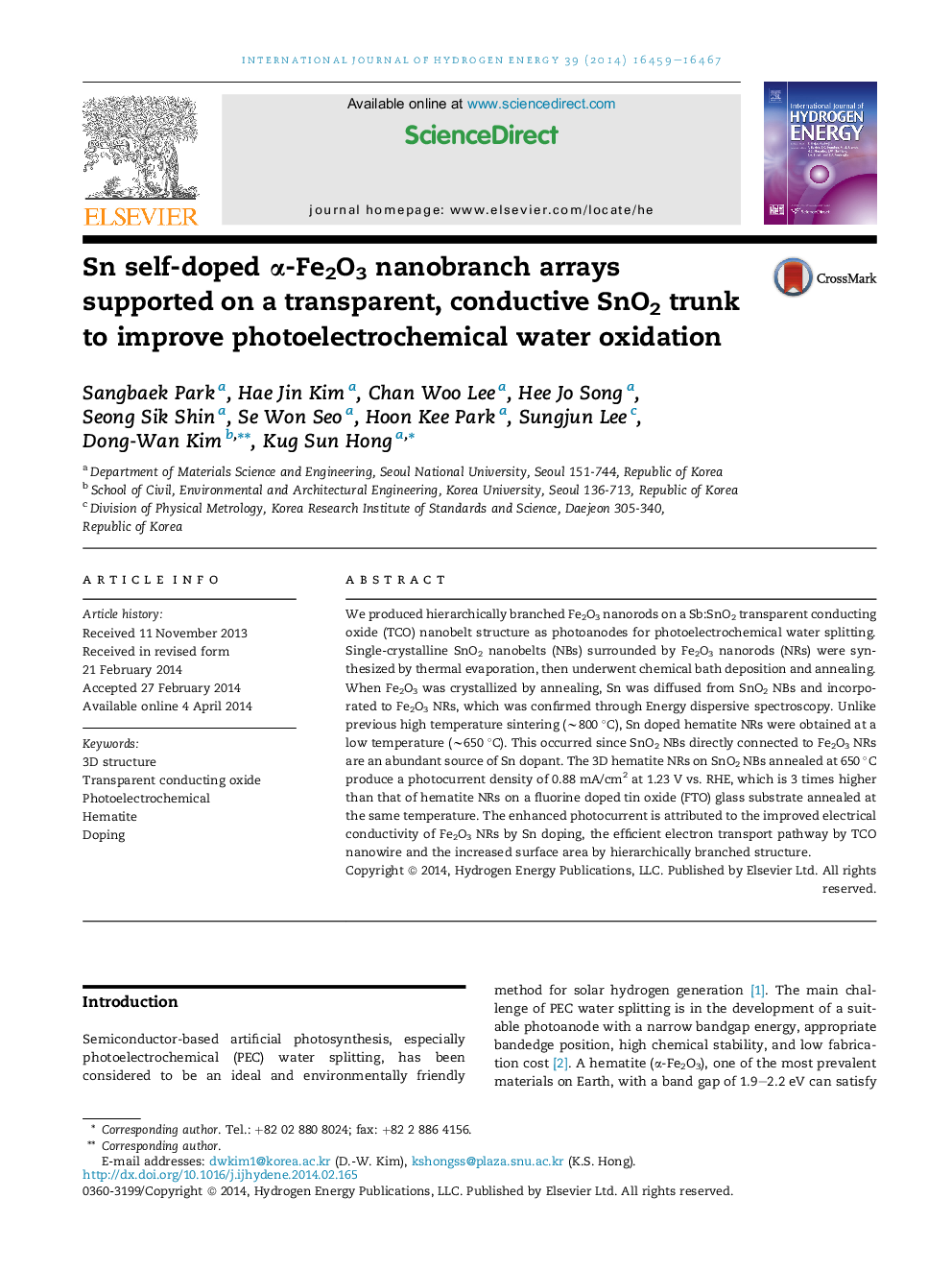| Article ID | Journal | Published Year | Pages | File Type |
|---|---|---|---|---|
| 1280983 | International Journal of Hydrogen Energy | 2014 | 9 Pages |
•Synthesis of Sn self-doped and three-dimensional α-Fe2O3/SnO2 nanostructure.•SnO2 nanobelts play a role of an abundant dopant source as well as backbone.•PEC performance was improved three times by doping and nanoarchitecturing.
We produced hierarchically branched Fe2O3 nanorods on a Sb:SnO2 transparent conducting oxide (TCO) nanobelt structure as photoanodes for photoelectrochemical water splitting. Single-crystalline SnO2 nanobelts (NBs) surrounded by Fe2O3 nanorods (NRs) were synthesized by thermal evaporation, then underwent chemical bath deposition and annealing. When Fe2O3 was crystallized by annealing, Sn was diffused from SnO2 NBs and incorporated to Fe2O3 NRs, which was confirmed through Energy dispersive spectroscopy. Unlike previous high temperature sintering (∼800 °C), Sn doped hematite NRs were obtained at a low temperature (∼650 °C). This occurred since SnO2 NBs directly connected to Fe2O3 NRs are an abundant source of Sn dopant. The 3D hematite NRs on SnO2 NBs annealed at 650 °C produce a photocurrent density of 0.88 mA/cm2 at 1.23 V vs. RHE, which is 3 times higher than that of hematite NRs on a fluorine doped tin oxide (FTO) glass substrate annealed at the same temperature. The enhanced photocurrent is attributed to the improved electrical conductivity of Fe2O3 NRs by Sn doping, the efficient electron transport pathway by TCO nanowire and the increased surface area by hierarchically branched structure.
